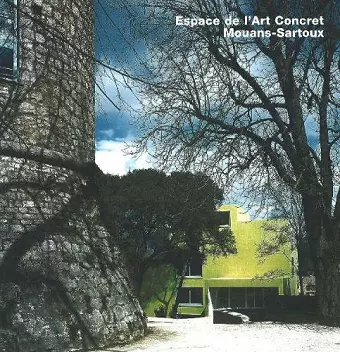Espace de l'Art Concret, Mouans-Sartoux
Opus 58
Axel Sowa author Jean Brasille illustrator Serge Demailly illustrator Andre Morin illustrator MRW Mediterrane illustrator
Format:Hardback
Publisher:Edition Axel Menges
Published:20th Apr '06
Currently unavailable, and unfortunately no date known when it will be back

Text in French and English. Mouans-Sartoux, a small community near Cannes, has become a Mecca for concrete art. Since 1990 two collectors from Switzerland, Sybil Albers and the artist Gottfried Honegger, have been working to establish the Espace de l'Art Concret (EAC). Neither a museum nor a municipal gallery, this institution is located in the Château de Mouans and in two new buildings in its large park. The first of the two new buildings was a studio designed by Marc Barani from Nice for children who come here to paint and to develop their aesthetic senses. Barani began work in 1990 with the extension to the cemetery of Saint Pancrace in Roquebrune-Cap-Martin. The way he located the cemetery in the local landscape and his use of original vegetable and mineral materials immediately brought him to international notice. In 2000 Albers and Honegger decided to donate their collections to the French state, on the understanding that it would finance a building to house the nearly 500 works of art. A competition was launched and was won by the Zurich architects Annette Gigon and Mike Guyer. The building, which opened its doors in 2004, stands on a steeply sloping wooded terrain. As one enters the park, one sees its yellowish-green hues through the branches of the trees. The monochrome colour unifies the five levels of the building that give no clue as to what it contains. While the outside of the building looks artificial, independent, sculptural, its interior is set up in accordance with Honegger's special instructions. He wanted the building that was to house his collection to be distinct from the official and sterile museums that are often laid out on the gallery model, passageways for contemplation, internal streets with overhead lighting. Honegger prefers an interior that is like a private home rather than a public institution. The domestic framework of the rooms must reflect a principle dear to the heart of the donors: that the works are to be lived with. Honegger takes an overall view of our material environment and emphasises that for him the distinction between fine arts and applied arts has no meaning, because "an unapplied art would have no purpose and would be bound to be insignificant and disappear".
ISBN: 9783932565588
Dimensions: unknown
Weight: 871g
60 pages